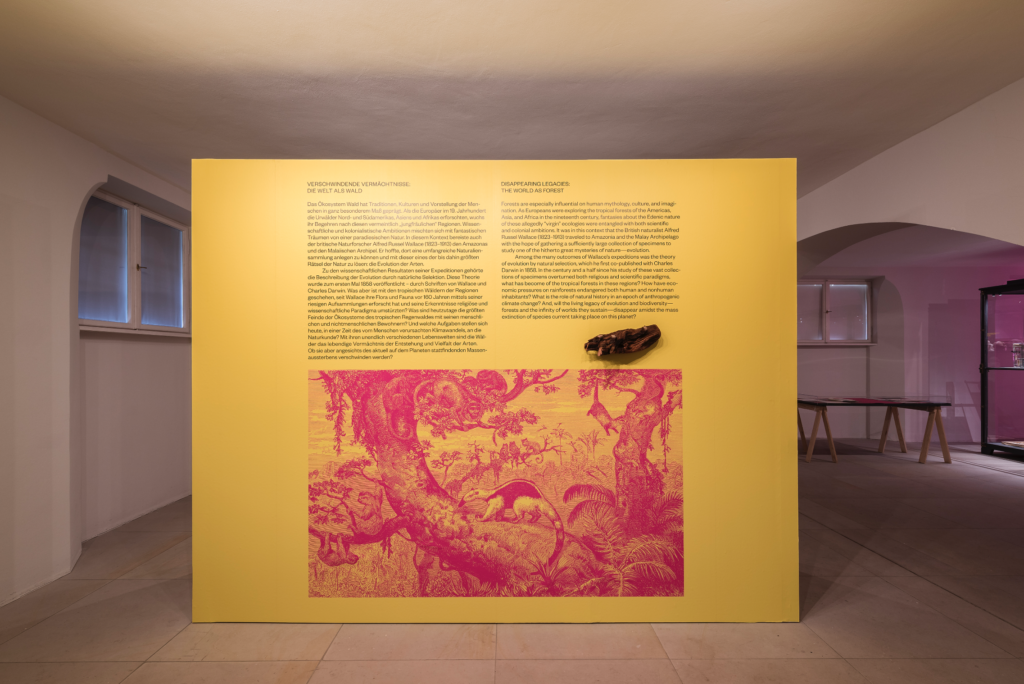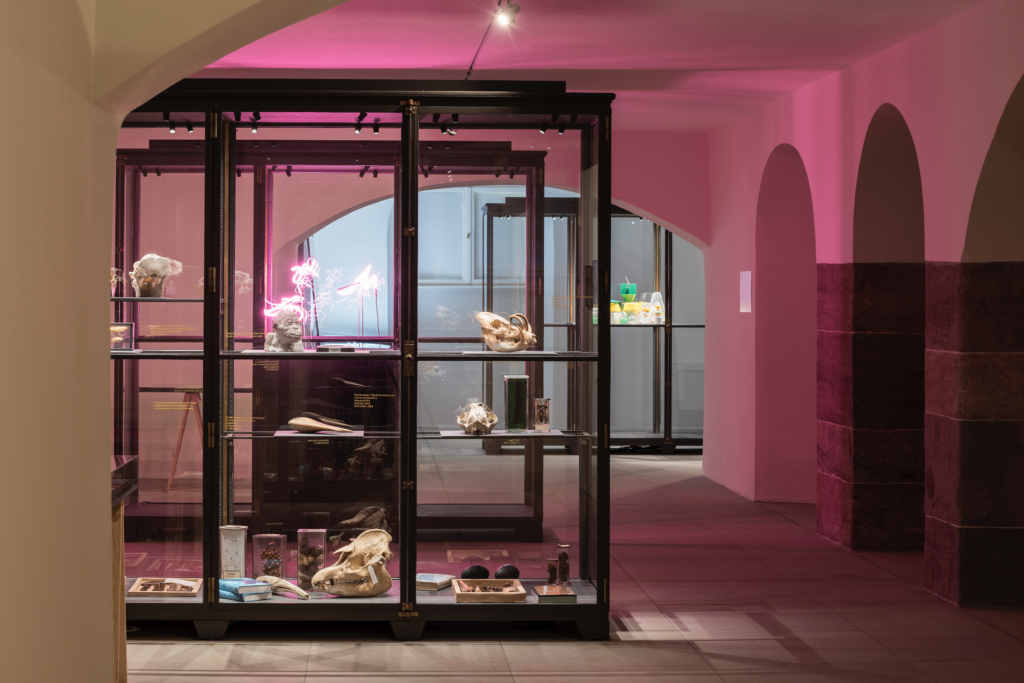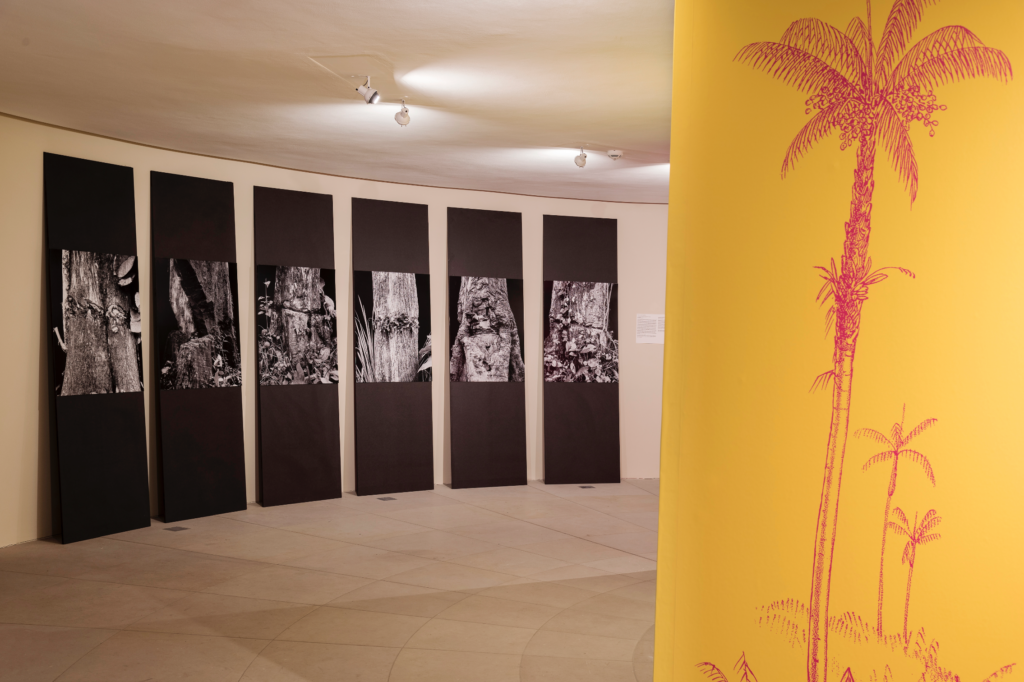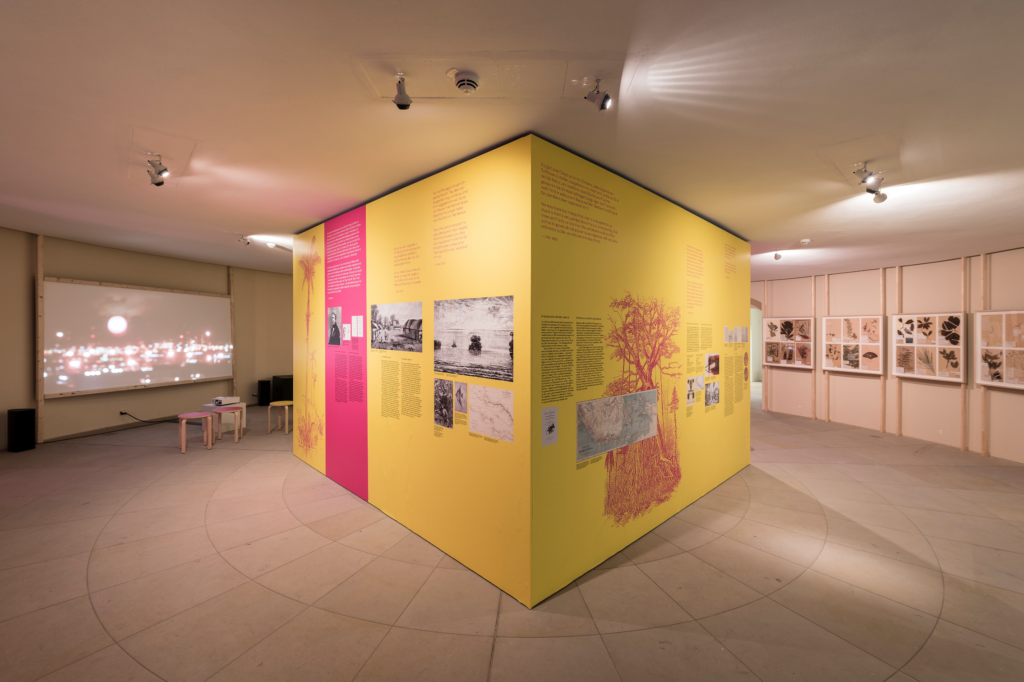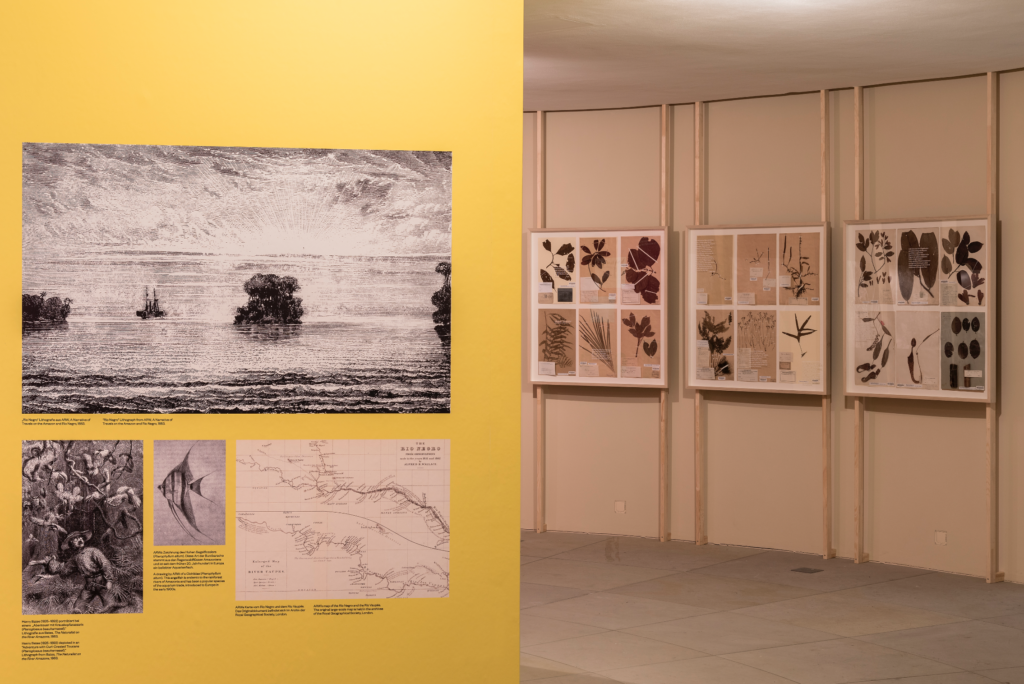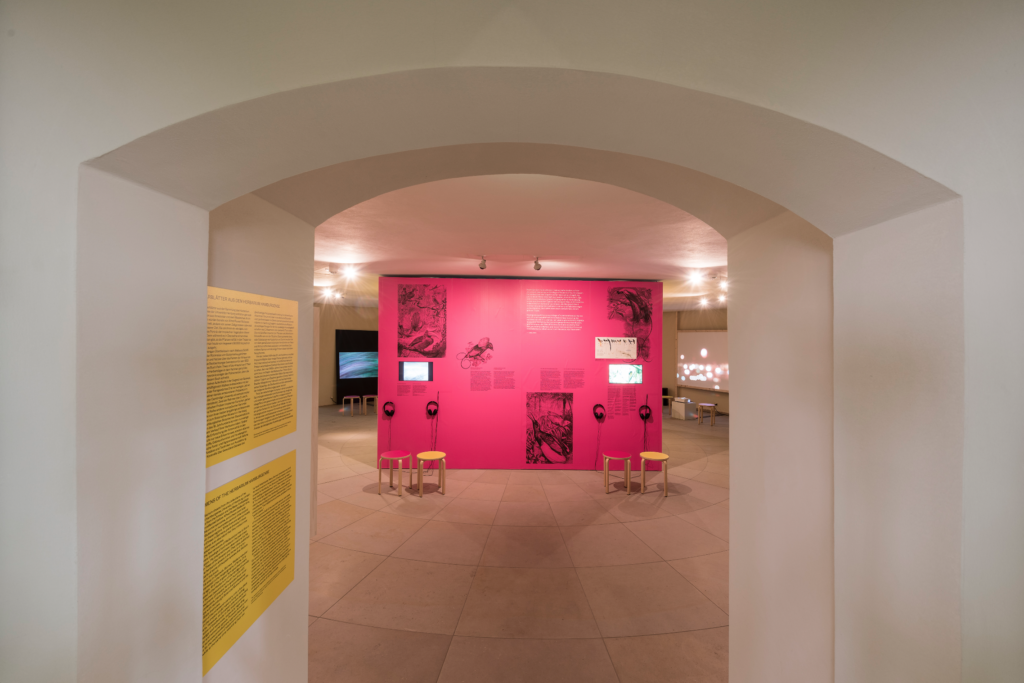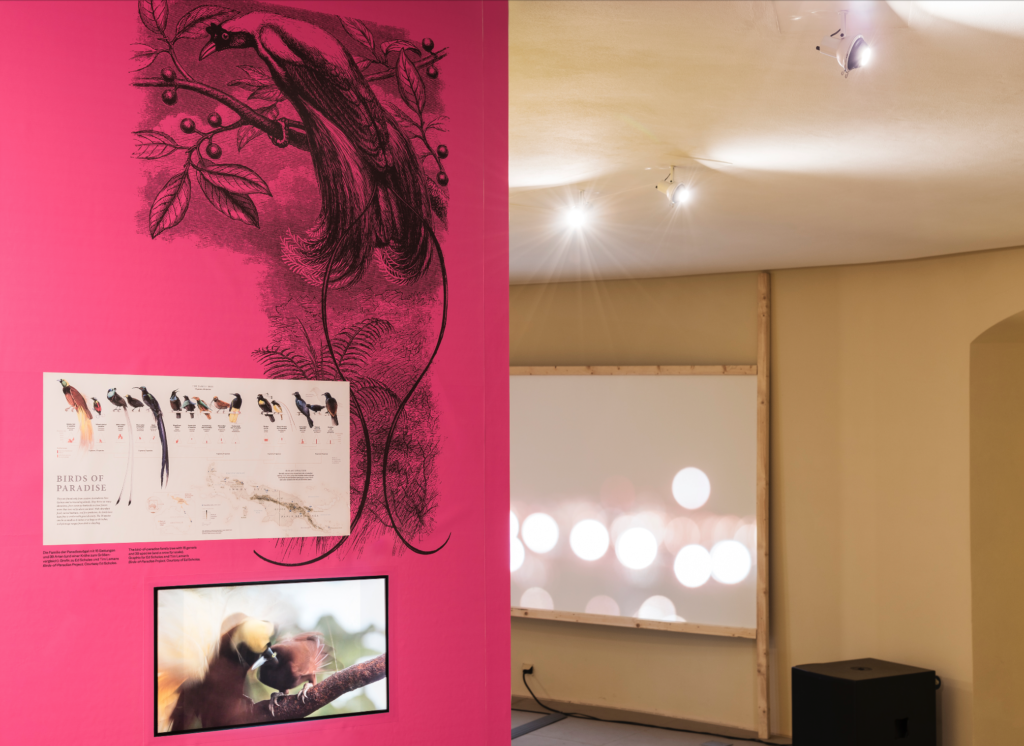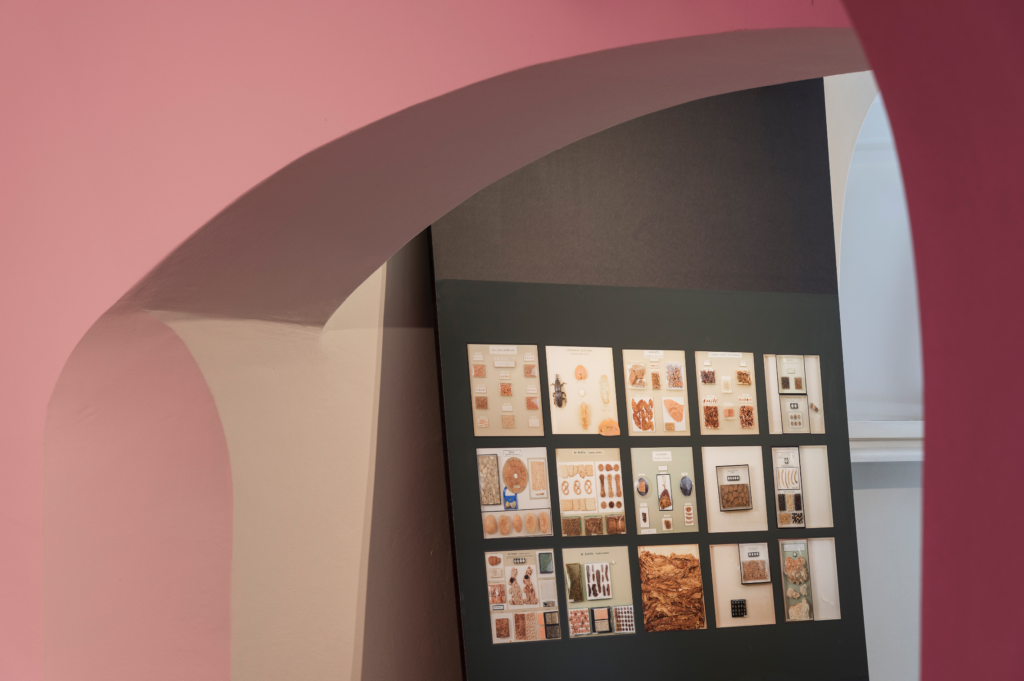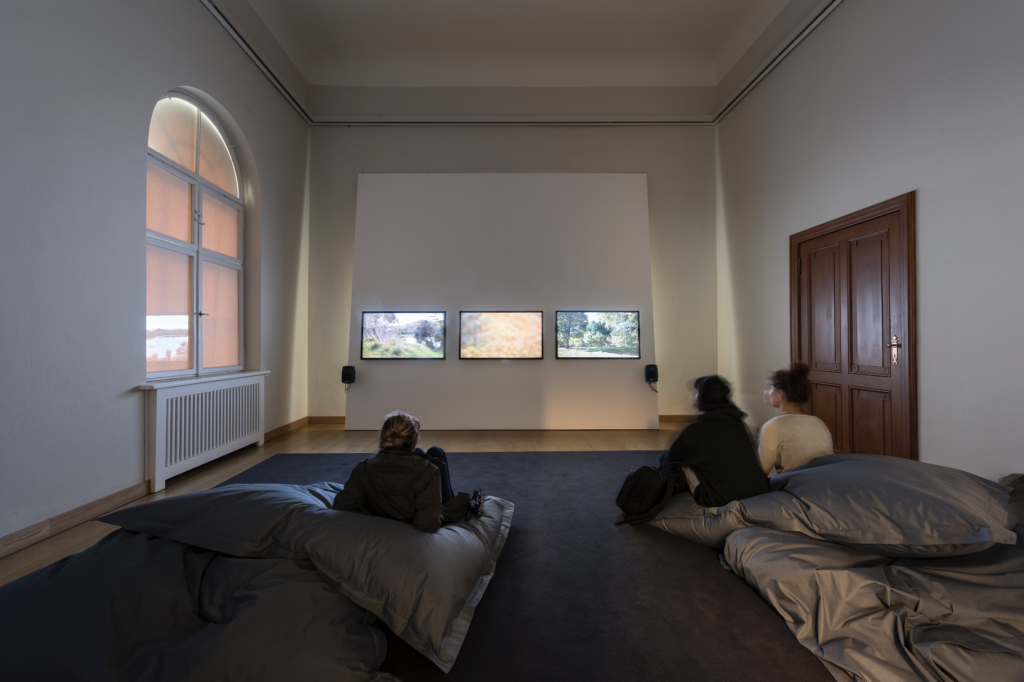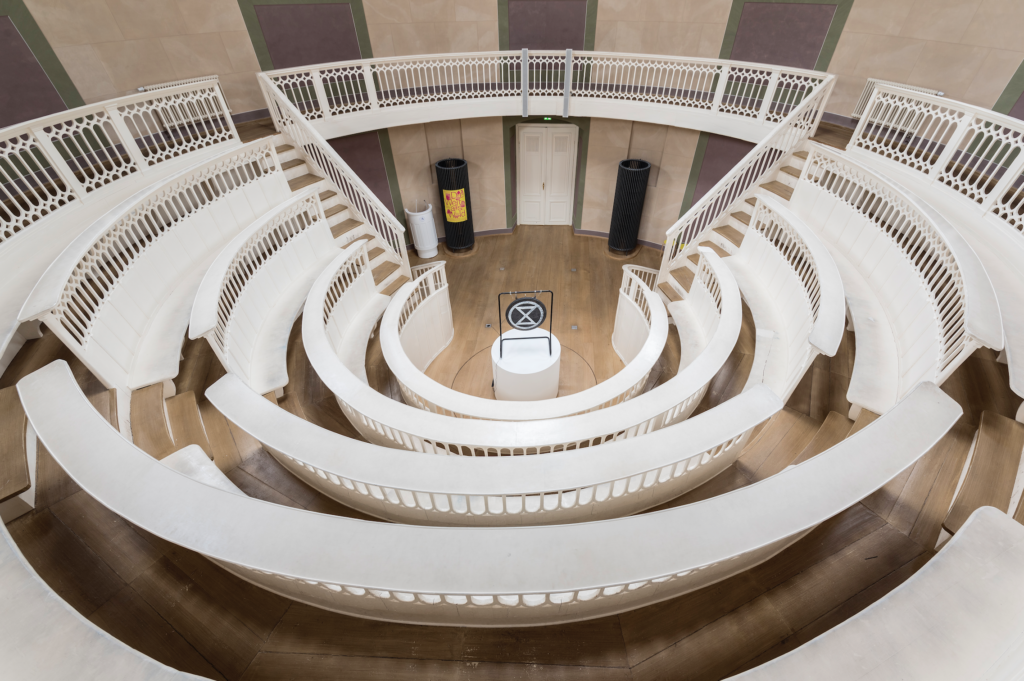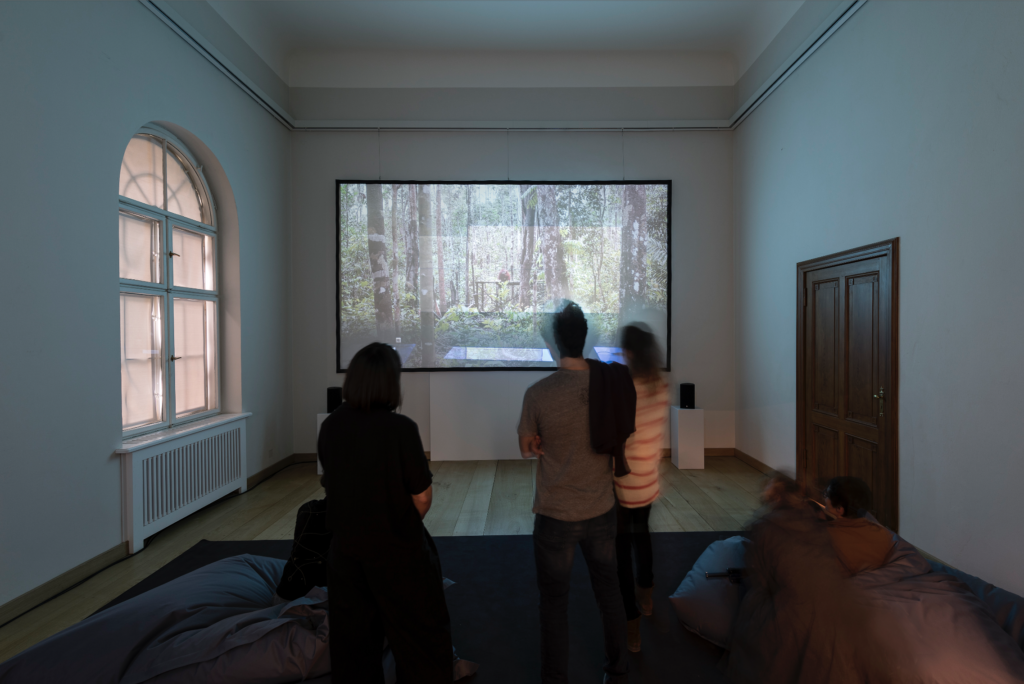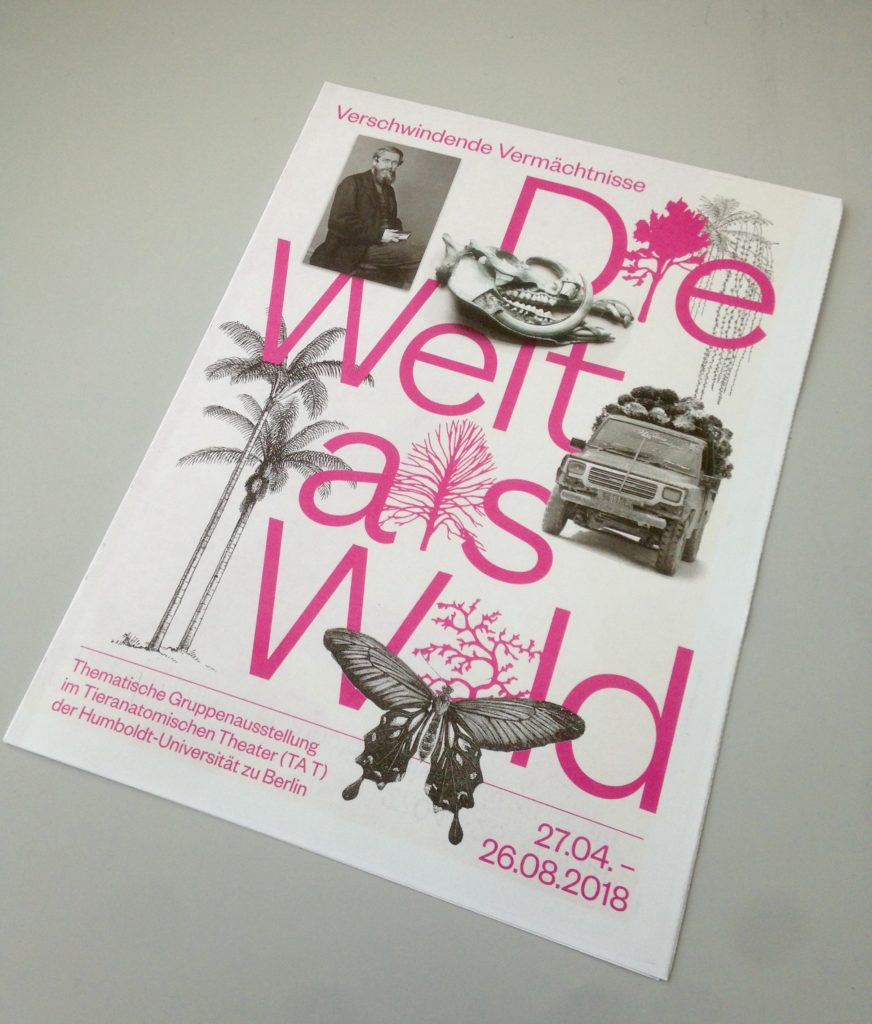Verschwindende Vermächtnisse: Die Welt als Wald
Verschwindende Vermächtnisse: Die Welt als Wald
[ Disappearing Legacies: The World as Forest ]
Second iteration of the three-part exhibition cycle
27 April – 26 August 2018
opens on 26 April, 19h00
Tieranatomisches Theater (TA T)
Raum für forschende Ausstellungspraxis
Humboldt-Universität zu Berlin
Philippstraße 12/13
D-10115 Berlin
Disappearing Legacies: The World as Forest confronts traditional images of nature in the context of species mass extinction, deforestation, and climate change.
Drawing connections from Alfred Russel Wallace’s mid-nineteenth century expeditions to Amazonia and the Malay Archipelago to current issues of environmental transformation, the exhibition presents 14 works of contemporary art alongside rare botanical and zoological specimens. Together, inherited notions of nature are challenged to critically inquire into the legacies resulting from the relentless destruction of highly complex ecosystems. Installations, photographs, films, and sculptures reflect on biodiversity suspended between science and monoculture.
Some of the artworks were developed through journeys to Brazil and Indonesia; others address the role of specimens and museum collections. Spending time on Borneo, Java, and Sumatra, photographer and filmmaker Armin Linke—together with his colleague Giulia Bruno and exhibition curators Anna-Sophie Springer and Etienne Turpin—conducted numerous interviews with local residents, plantation workers, small land holders, environmentalists, government officials, and scientists. The result is a cinematic document that reflects the speed with which Indonesia is currently transforming into a palm-oil nation amid giant peat fires. With her 19-channel video installation To See the Forest Standing, Maria Thereza Alves invites us to listen to the 34 Indigenous clan chiefs, whom she accompanied for one month last summer in Brazil while participating in a workshop on Indigenous agroforestry and resource conservation. Meanwhile, Revital Cohen & Tuur van Balen look inward and examine taxidermy birds-of-paradise with piercing X-ray vision, while the automated multimedia installation Extinction Gong by Julian Oliver & Crystelle Vũ translates the IUCN Red List of Endangered Species into an eerie and percussive rhythm in real-time. Another highlight of the exhibition is the 3D digital rendering of a Sumatran rhino skull, an exhibit that emphasizes the tension between scientific knowledge production and de-naturalization. As a CT scan, the skull provides scientists with new data while at the same time drawing public attention to the plight of this highly endangered animal.
One-hundred and sixty years after Wallace deciphered the principle of species evolution during his journeys, Disappearing Legacies asks whether the living legacy of evolution and biodiversity—forests and the infinity of worlds they sustain—will disappear amidst the mass extinction of species current taking place on this planet.
Exhibition map & program [ PDF ]
Participating artists:
Maria Thereza Alves, Ari Bayuaji, Bik Van der Pol, Shannon Lee Castleman/Migrant Ecologies, Revital Cohen & Tuur van Balen, Mark Dion, Radjawali Irendra/Akademi Drone Indonesia, Armin Linke mit Giulia Bruno und Giuseppe Ielasi, Barbara Marcel, Julian Oliver & Crystelle Vu, PetaBencana.id, SHIMURAbros, Paulo Tavares/autonoma, Robert Zhao Renhui/The Institute of Critical Zoologists
Discursive program:
The event series HOW ON EARTH? comprises a number of lectures, discussions, screenings, and guided tours. The program kicks off on 28 April with a curators’ tour, artists’ talks by Barbara Marcel and Crystelle Vu; followed by lectures by Shannon Mattern (New School) and Birgit Schneider (Potsdam University) [ more ]
Verschwindende Vermächtnisse: Die Welt als Wald
[ Disappearing Legacies: The World as Forest ]
27 April – 26 August 2018
Tieranatomisches Theater (TA T)
Raum für forschende Ausstellungspraxis
Humboldt-Universität zu Berlin
Philippstraße 12/13
D-10115 Berlin
Contact:
+49 30 2093 466 25
welcome@tieranatomisches-theater.de
tieranatomisches-theater.de
Opening hours:
Tue to Sat 14h00–18h00
Mon, Sun, and public holidays closed
Entry is free
Verschwindende Vermächtnisse: Die Welt als Wald is a three-part project by Anna-Sophie Springer and Etienne Turpin. The travelling exhibition is realized by Centrum für Naturkunde at the University of Hamburg, where it was on view in the Fall of 2017. In 2018, adapted iterations are presented from 27 April to 26 August 2018 at the project partner, Tieranatomische Theater at Humboldt University in Berlin, and from 19 October until 14 December 2018 at the Zentralmagazin Naturwissenschaftlicher Sammlungen of the Martin-Luther-Universität Halle-Wittenberg in Halle/Saale. The exhibition cycle is a cooperation with the Schering Stiftung and the Goethe-Institut. The project is funded by the German Federal Cultural Foundation.
